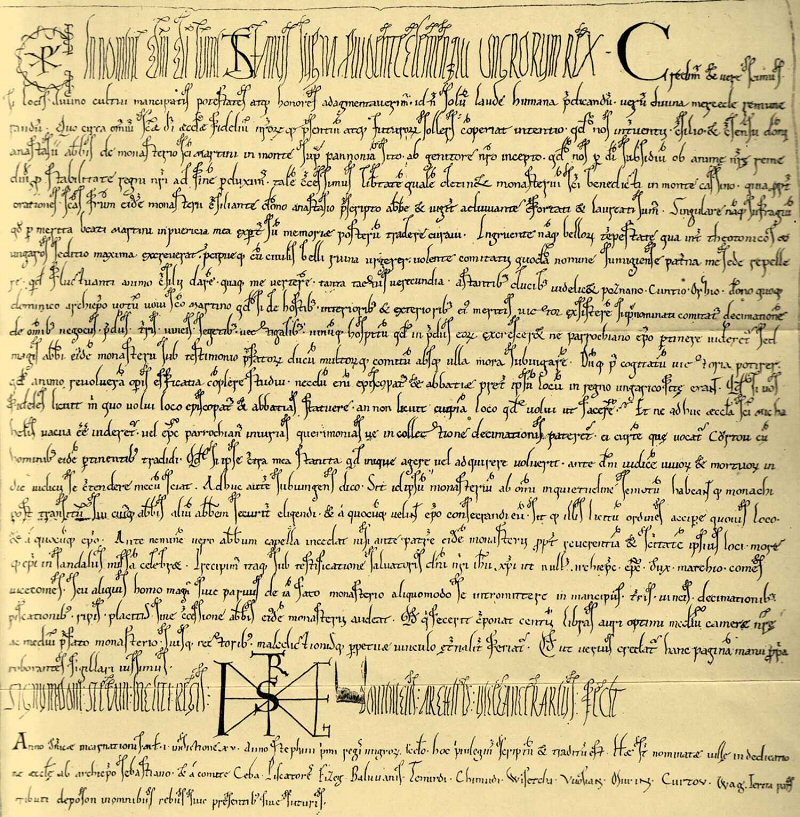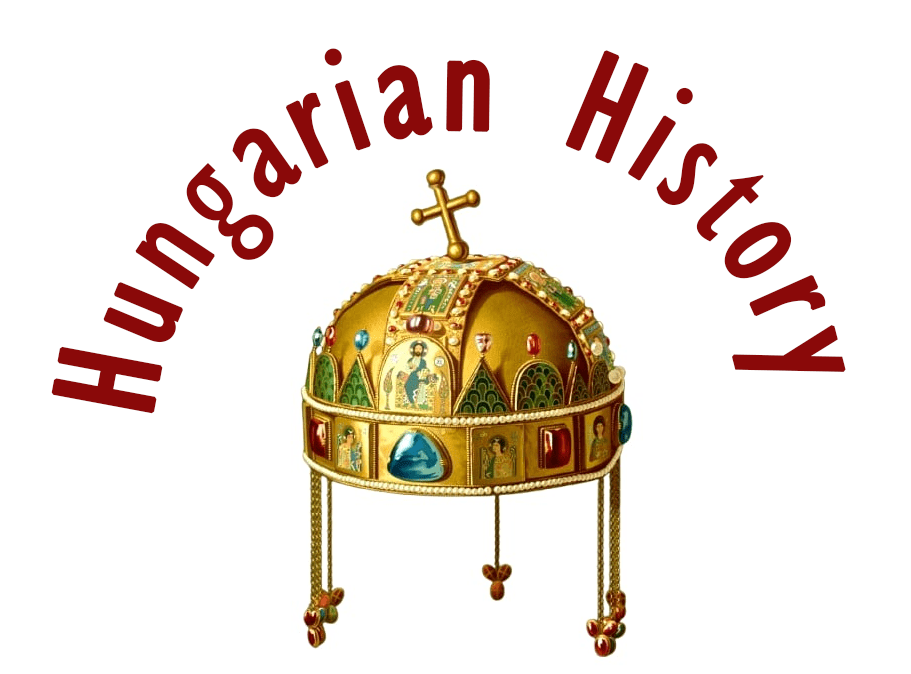The monogram of Saint István, i.e., the graphic symbol concealing his name and title, may be familiar to many. When older generations see the monogram, the first thing that comes to mind is surely the album cover of the Szörényi-Bródy rock opera István, a király (István, the King). However, fewer people are likely to know that the king’s monogram has been preserved for us in the Pannonhalma charter. This is the earliest Latin document in Hungary and the only one of St. Stephen’s documents that has survived in its original form.

It is in its original form, but it is not original. Its text was slightly expanded at the beginning of the 12th century, or according to other opinions, at the turn of the 12th and 13th centuries, but it was copied in such a way that the handwriting of the original document’s author is recognizable. This person is Heribert, the notary of the German-Roman Emperor Otto III, designated by the name C. It is natural that the work of the clerk who came to the Hungarian royal court from the German chancellery shows similarities to German documentary practice in terms of diplomacy, style, and content. The same can be said of the documents of István, which are copies made much later and do not attempt to imitate the original documents in appearance.

The Pannonhalma charter thus retained its original form, faithfully imitating all the external characteristics, spelling, and style of the original. We can therefore be certain that the representative royal monogram edited by Heribert C looked the same on the charter issued in 1001. Of course, the royal monogram was also based on contemporary German models.

When writing developed in Hungary, graphic symbols had already been used for centuries in the charters of the more developed regions of Europe. One type of these was the authentication mark of the ruler issuing the charter. The monogram in the charters of the German-Roman emperors was a sign composed of the letters of the ruler’s name and, since Otto II, his title, which remained in Imperial charters throughout the Middle Ages. István’s sign was also such a titular sign, i.e., it contained his royal title, which replaced the ruler’s signature.

The rectangular monogram reads: STEPHANUS REX, meaning King Stephen. The monarch himself contributed to the creation of monograms of this type by adding the final stroke with his hand. Based on the charter, it cannot be determined whether the original monogram bore the king’s handwriting. However, based on the text of the charter, it can be assumed that the king participated in the creation of the sign, as the clause mentions – hanc paginam manu propria roborantes – that the king authenticated the charter with his hand. István’s charter related to the bishopric of Veszprém contains similar words.

The founding charter of Tihany, dated 1055 and already showing French influence, also contains a monogram, the sign of the charter’s issuer, the founder of the abbey, King András I. This monogram is also rectangular, but unlike the monogram of István, it does not include the king’s title (rex). At the end of the charter, the phrase “consignatumque manu regis” indicates that the king was also involved in the creation of the monogram in this case. However, we are unable to identify his handwriting.

Based on a palimpsest (scratched off) document, it is likely that King Béla I also used a monogram, but after him, our kings did not use this method of authentication. Of the graphic symbols used on documents, only the cross remained in use in the 12th century, and then even that fell out of favor in the 13th century.
Source: Pannonhalmi Főapátsági Levéltár – leveltar.osb.hu

✨ Own a Piece of History!
This exclusive monogram design—✝ Stephanus rex ✝—lets you wear St. Stephen’s legacy.
Now on https://www.redbubble.com/i/t-shirt/The-Signature-of-Saint-King-Stephen-of-Hungary-by-HunHistory/172929852.MDRPO as T-shirts, mugs & more.
Every purchase supports independent historical research.







